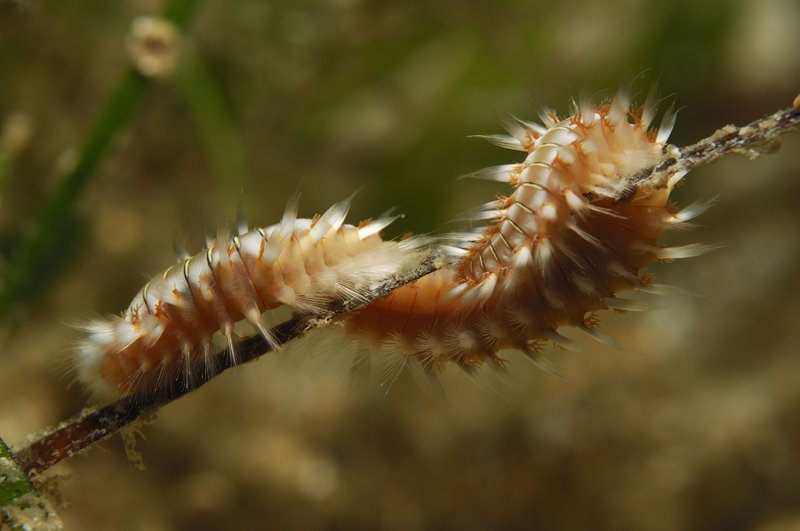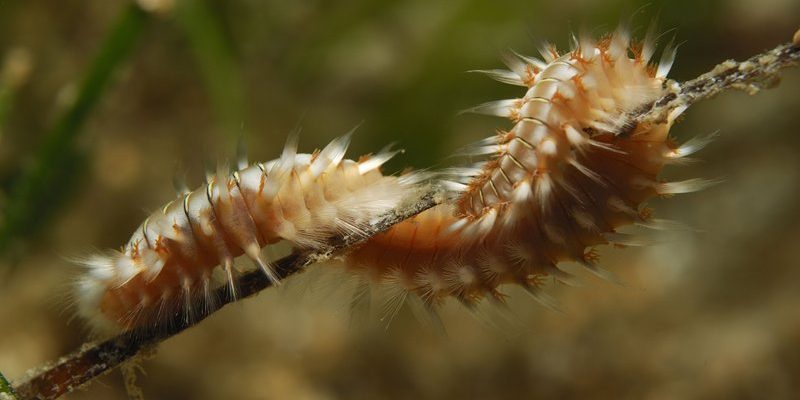
So, what exactly are bristle worms? Simply put, they’re segmented worms found in marine environments, often spotted in sandy or muddy substrates. They come in various sizes and colors, and while they may look a little creepy to some, they’re actually quite fascinating! Let’s dive into the deep end and explore why you might want to keep bristle worms as part of your aquatic ecosystem, along with some potential downsides to consider.
Understanding Bristle Worms: What Are They?
Bristle worms belong to the class Polychaeta and are commonly found in coral reefs and seagrass beds. They play a vital role in breaking down detritus, which is dead organic matter, and recycling nutrients back into the ecosystem. Think of them as nature’s recyclers; they’re always on the hunt for leftovers.
These worms can vary significantly in size, with some measuring just a few centimeters, while others can grow to over a meter in length! They are equipped with bristles—tiny, hair-like structures—that give them their name and help in movement and feeding. While they’re generally harmless, their presence can indicate the health of your aquarium’s ecosystem.
Benefits of Keeping Bristle Worms
So, why would you want to welcome these little guys into your aquarium? Here are some significant benefits of keeping bristle worms:
1. Natural Cleanup Crew
One of the standout advantages of keeping bristle worms is their role as natural cleaners. They consume uneaten food, decaying plant matter, and organic waste that can contribute to unhealthy water conditions. By adding bristle worms to your setup, you’re essentially introducing a team of efficient clean-up crew members.
Imagine not having to scoop out leftover fish food yourself; these little worms will tidy things up for you. This not only keeps your tank cleaner but can also help maintain water quality, which is crucial for the overall health of your aquatic life.
2. Contribution to Nutrient Cycling
Bristle worms play a key role in **nutrient cycling**. When they consume organic material, they break it down into simpler compounds that other organisms can use. This process enriches the substrate and water column, promoting a thriving ecosystem.
In a way, they’re like the fertilizer of your aquarium. By helping to decompose waste, they ensure that essential nutrients are available for plants and corals, leading to a more vibrant and healthy environment for all your tank inhabitants.
3. Increased Biodiversity
Adding bristle worms can help enhance the biodiversity of your aquarium. Biodiversity can lead to a more resilient ecosystem, capable of withstanding stress, diseases, and changes in water conditions.
By bringing in different species of bristle worms, you’re not just adding a new creature; you’re enriching the entire environment. Just like planting various flowers in a garden makes it more beautiful and resilient, adding bristle worms can improve your aquarium’s health.
Potential Drawbacks of Keeping Bristle Worms
While there are several benefits to keeping bristle worms, it’s essential to consider the potential drawbacks as well. Here’s what you need to keep in mind:
1. Overpopulation Risks
One concern with bristle worms is the risk of overpopulation. If conditions in your tank are right (think plenty of food and shelter), bristle worms can reproduce rapidly. This can lead to an overcrowded environment, which might upset the balance of your aquarium more than help it.
If you notice a sudden explosion of these worms, it may be time to intervene. Regular tank maintenance and monitoring can help prevent this from happening.
2. Aggressive Feeding Habits
Bristle worms have a reputation for being voracious eaters. While this is generally a good thing, it can also pose a problem if they start to overconsume and compete with other inhabitants for food. They might munch on coral polyps, small fish, or even other beneficial organisms if they feel threatened or hungry.
That said, this usually happens when they’re not getting enough food in their diet. Balancing your feeding routine can mitigate this issue, but it’s something to keep in check.
3. Handling and Spinosity
Bristle worms have tiny bristles that can irritate human skin, so handling them can be a bit of a pain—literally! If you accidentally touch one, you might end up with a mildly painful sting.
It’s crucial to use gloves when handling bristle worms or any substrate where they might reside. Understanding how to manage them can help reduce the risk of a pesky encounter.
Tips for Maintaining Bristle Worms in Your Aquarium
If you decide to keep bristle worms in your tank, here are some tips for maintaining a healthy environment for them:
1. Monitor Water Quality
Keeping an eye on water parameters is key. Make sure your aquarium is well-aerated, and maintain stable pH, salinity, and temperature levels. Regular testing and maintenance will help ensure your bristle worms (and the rest of your tank) stay healthy.
2. Feed Responsibly
When adding food to your aquarium, be mindful of portion sizes. Overfeeding can contribute to a bristle worm population explosion and negatively impact your aquatic life.
Try using high-quality, sinking pellets designed for your specific fish or invertebrates. This way, leftover food doesn’t become a buffet for the worms, helping you control their population.
3. Create Hiding Spots
Bristle worms appreciate having places to hide, so including rocks, caves, or even buried substrates can benefit them. This not only makes them feel secure but also supports their natural behavior. Plus, it adds visual interest to your aquarium!
When to Consider Alternatives
If you’re not sure bristle worms are the right fit for your tank, or if managing their population and behavior seems daunting, there are alternatives. Other **cleanup crew** members, such as snails and crabs, can help maintain your tank without some of the drawbacks associated with bristle worms.
Ultimately, the choice to keep bristle worms will depend on your specific aquarium setup and your willingness to monitor and manage their population.
Final Thoughts on Keeping Bristle Worms
Keeping bristle worms can offer a lot of benefits to your aquarium, from natural cleanup services to improving nutrient cycling. However, like any creature, they come with their own set of drawbacks that require attention and management.
If you’re up for the challenge, these fascinating worms can add depth and vibrancy to your aquatic environment. Just remember to keep an eye on their population and feeding habits to maintain harmony in your underwater world. Happy fishkeeping!

